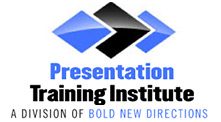When it comes to delivering an effective sales presentation, there is no “one size fits all approach.” Every sales presentation you deliver to a prospect should be personalized and tailored just for them. This requires a combination of strategy, psychology, and clear communication. Here are some key strategies to help you close more sales through your presentations.
1. Understand the Needs of Your Audience
Take the time to research your prospects before the presentation. Understand their pain points, business goals, and challenges. Once you know what their needs are, you can tailor your presentation to meet those specific needs. Highlight the aspects of your product or service that specifically address their needs, rather than offering a generic pitch. You should also ask probing questions to learn more about specific concerns and adapt your presentation in real time based on their responses.
2. Build Rapport and Trust
Start with a strong introduction and share relevant credentials, experiences, or success stories to establish credibility. It is also important to be empathetic. Acknowledge their challenges and show genuine interest in solving their problems.
3. Clearly Define the Problem and Offer a Solution
Start by clearly defining the problem your prospect faces, making it relevant to their specific situation. Next, position your product or service as the answer to that problem. Finally, quantify how your solution can bring value. This might include saving time, increasing revenue, or reducing costs.
4. Use Storytelling
Share client case studies and testimonials to demonstrate real-world success stories that are relevant to the prospect. Stories are memorable and relatable, so share how other businesses in similar situations benefitted from your solution.
5. Highlight What Sets You Apart
Explain what makes your product or service different from competitors. This could be unique features, pricing advantages, or superior customer support. Be proactive in addressing potential objections, whether it’s pricing, implementation, or support. Provide reassurance and solutions.
6. Create a Sense of Urgency
If applicable, emphasize that your solution has limited availability or a high demand, creating a fear of missing out. Remind the prospect of the negative consequences of delaying the decision, such as missed opportunities or ongoing inefficiencies.
7. Go in for the Close
Assume the prospect is ready to move forward and ask questions like, “Would you like to set up the implementation date?” or “What’s your preferred payment plan?” Don’t shy away from asking for the deal. A direct question like, “Are you ready to move forward with this solution today?” can often prompt a decision.
By focusing on building relationships, clearly defining value, and addressing concerns proactively, you can create a sales presentation that not only captures attention but also successfully closes deals. If you want to learn more about how to give a great sales pitch, start by enrolling in one of our Presentation Training courses and let us help you get to “yes!”
